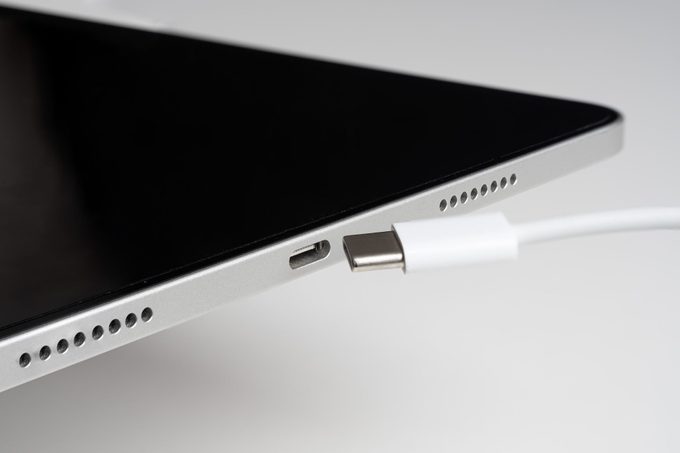Tech companies have been trying to standardize connections between computers and their “peripherals” — mice, keyboards, scanners and the like — for decades. But when you’re frantically searching the old box of cords for that one weird shape needed by a specific device, standardization seems more of a stretch than a reality.
USB, or Universal Serial Bus, emerged in the late 1990s as the agreed-upon standard for data transfer between devices and their peripherals. It’s had staying power, if not universal connectivity. Those cords in the box? Lots of them are probably early USB.
Enter USB-C. If you have a laptop, tablet or Android phone, you’re familiar with this newest USB port and plug. USB-C doesn’t just handle data, though. Today’s USB technology delivers power, too, and lots of it.
Can those old cords finally be retired? Things are looking up.
USB Types vs. USB Standards
When we think of a USB plug or port, we tend to think about what it looks like. It turns out that’s exactly what we should be doing.
USB types are categorized by their shape. The familiar, flat rectangular-shaped USB port that’s been on the backs of computers for decades? It’s called USB-Type A, or USB-A.
USB standards, also called specifications, deal with the underlying technological capabilities of USB: data transfer speed and power delivery. The first data standard was USB 1.0, and the latest is USB4, with multiple revisions in between. The latest power delivery standard is USB-PD Revision 3.1.
Every device, cable, plug or port that uses USB technology is a specific type (like USB-C), and performs to specific standards (like USB4 and USB-PD).
What Is USB-C?
USB-C is a connection type that puts the universal in USB. Oblong and symmetrical, there’s no right way or wrong way to plug them in. The cables are bidirectional, too — it doesn’t matter which end goes to which device. Data and current can travel in either direction.
Ease of use is a great perk, but performance is often the bigger driver of tech adoption. USB-C has much greater data and power transmission capability than previous USB types, and it supports multiple kinds of data — even non-USB data, like HDMI.
Devices that don’t use USB-C yet — ahem, iPhones — will soon be forcibly dragged into the USB-C family, at least in Europe. The European Union (EU) Parliament will require USB-C charging capability on all small- and medium-sized devices by late 2024.

What is USB Power Delivery?
USB Power Delivery (USB-PD) is a USB charging specification that maximizes the available power delivered to a device. When people talk about “fast charging” technology, that’s USB-PD.
The latest USB-PD standard can deliver 240 watts — power is measured in watts — to devices that can handle it. That’s a huge leap over the previous spec, which maxed out at 100 watts.
Just because a charger can deliver 240 watts doesn’t mean a device needs all that juice, or that a cable can handle it. It’s important that a power delivery system doesn’t just blast out the max power to whatever happens to be plugged in. Headphones don’t need the same wattage as a laptop.
USB-PD allows devices to communicate with each other before transmitting and receiving power, so they can take and/or deliver only what is needed.
USB-C for Power Delivery
Can USB-PD run on USB-C cables? Absolutely. The latest generation of USB-PD puts out max power only when paired with the latest USB-C technology. But not all USB-C cables and ports can handle USB-PD.
Confused yet? Think of it like this: A chain is only as strong as its weakest link.
When the USB Implementers Forum, USB’s governing body, releases new standards, they don’t confiscate the old stuff. It still works, right? It’s just using a slightly less powerful tech, and it will be limited to the speed and power that it’s already capable of.
So if you buy the latest USB-PD charger, but don’t buy the newest version USB-C cable, you won’t be getting the charger’s max output. Likewise, if the device you want to charge can’t handle the max output, it won’t accept it.
Do I Need New Chargers and Cables?
Only if you want or need to take advantage of the fastest speeds and power capabilities, and only if your device can handle the latest fast-charging technology. Verify that your device is compatible before investing in USB-PD chargers.
Can USB-C Power Delivery Charge Older Devices?
Yes. Power delivery chargers are backward compatible, meaning they will charge older devices as long as they each have the same USB-C connection type. But again, you will only get the power delivery that the older device can accept.
Article source here: What’s The Difference Between USB-C and USB-C PD?


No comments:
Post a Comment